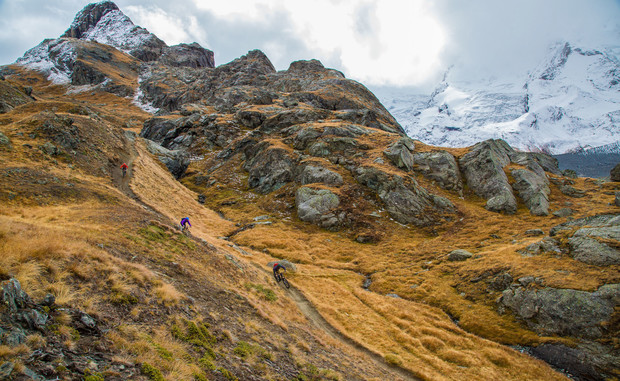 To get the most out of the epic trails and massive vert of the Swiss Alps, take advantageous of these tips. Ryan Dunfee photo.
To get the most out of the epic trails and massive vert of the Swiss Alps, take advantageous of these tips. Ryan Dunfee photo.
The Swiss Alps are truly unlike any terrain you'll be able to ride in North America. Absolutely monster lift-accessed runs that don't end at the edge of the bike parks, and can easily turn into all-day epics down valley after valley of well-worn hiking trails with simply gratuitous amounts of descending. Combine it with the sumptuous food and cultural experience of biking in one of the world's oldest mountain cultures, and you have yourself the trip of a lifetime.
 Epic Europe founder Jack Shaw during the Singletrack Switzerland trip. Ryan Dunfee photo.
Epic Europe founder Jack Shaw during the Singletrack Switzerland trip. Ryan Dunfee photo.
I'm Jack Shaw, and I'm the founder of Epic Europe, an adventure travel guide operation based in Verbier, Switzerland since 2010. Prior to that, I was a freelance journalist and producer throughout the Alps, working in the ski, bike, outdoor, and travel media.
Epic Europe offers high-end bespoke ski, cycling, hiking & mountaineering trips in Switzerland, France & Italy, and we guided the TGR crew on their Singletrack Switzerland trip, working to make the most of their experience in Zermatt, Verbier, and in the Jungfrau Region.
Given that biking in the Swiss Alps is so different than anywhere, I thought I'd share a few tips about how to make the most of your trip:
#1: To Bring Your Bike or Not To Bring Your Bike?
 You'll have to weigh the value of paying to fly your bike over versus the cost of renting one locally. Ryan Dunfee photo.
You'll have to weigh the value of paying to fly your bike over versus the cost of renting one locally. Ryan Dunfee photo.
Decide how much you really want to bring your own bike, and what the cost benefit will be versus renting. Most bike-centric resorts have a solid selection of demo bikes, which can run you anywhere from CHF 30-80 per day, with discounts for longer rentals. The Swiss franc is currently worth about 1.02 US dollars.
Additionally, it depends on the airline, but bike baggage fees vary widely. At the moment, Swiss International Airlines charges CHF 150 for your bike each way. Sometimes soft bike cases like the Evoc or Dakine wheelie bags are viewed as regular luggage, and not charged extra if you’re lucky. And while we travel on train, there is a CHF 15 a day charge on top of your regular ticket for the bike.
#2: A Good Map Is Critical
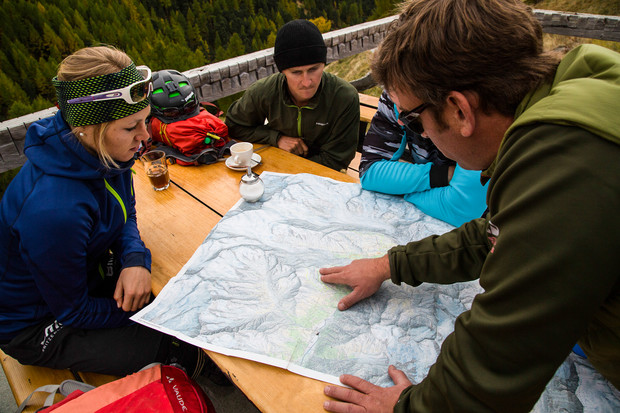 That far-off hiking trail may look tempting, but you'll need a topo map to make sure it's got the profile for good riding. Ryan Dunfee photo.
That far-off hiking trail may look tempting, but you'll need a topo map to make sure it's got the profile for good riding. Ryan Dunfee photo.
The Switzerland Mobility hiking trails app is an invaluable resource for plotting routes along the chemins pédestre / wanderwegs, or hiking trails. Real elevation profiles and distances will let you know if you’re on a flowy route, or setting yourself up for an all-day epic hike-a-bike.
A good GPS/topo map that lives on your smartphone is also a good idea to have to let you know you are in the right place, and we use gps-tracks (free) or Swiss Map Mobile (pay). For hard-copy topo maps of different Swiss bike zones, the Supertrail maps are some of the best, with trail difficulty ratings and descriptions.
#3: Go With Tough Tires, And Bring Extra Brake Pads and Tubes
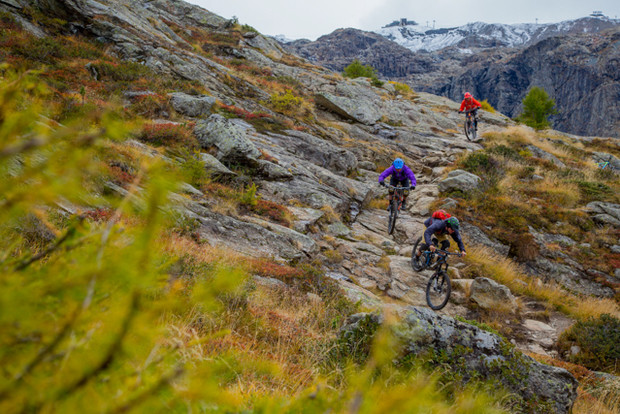 Since you're going to spend the majority of your time descending, and often riding challenging trails, burly tires are key. Ryan Dunfee photo.
Since you're going to spend the majority of your time descending, and often riding challenging trails, burly tires are key. Ryan Dunfee photo.
Obviously, bring your helmet, pedals, shoes, kneepads, and gloves. When you are riding 1,500 meter-plus descents, you tend to go through a lot of brake pads. If bringing your own bike, stock up at home, as they are expensive in Switzerland. Same goes for tubes.
DREAM AWAY: Check out TGR's interactive piece about mountain biking the Swiss Alps
If renting, they will replace them for you, but maybe see if the shop will give you an extra set to throw in your pack. The trails in the Alps are rocky and jagged, so whether you are running tubeless or regular, bring tough tires with a burly tread pattern; leave your lightweight XC tires at home. If bringing your own bike, a good lock is recommended as well.
#4: Definitely Bring a Backpack for Riding
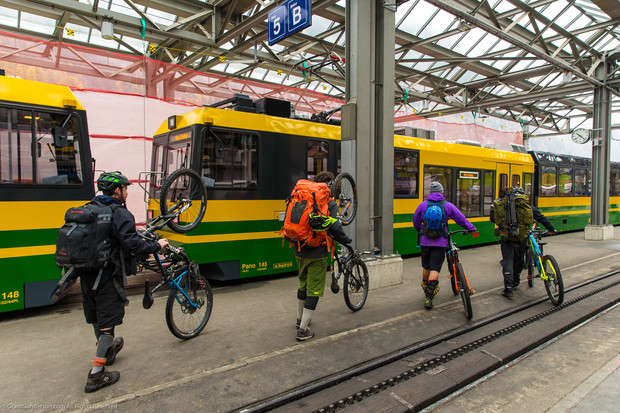 The TGR production crew might be a bit overkill on backpack size in this photo, but you'll want to pack as if you were backcountry skiing for the day. Grant Gunderson photo.
The TGR production crew might be a bit overkill on backpack size in this photo, but you'll want to pack as if you were backcountry skiing for the day. Grant Gunderson photo.
We typically ride with packs that have at least 20 liters of storage so you have room for an extra layer, tubes, repair tools (at least a multi-tool with a chain breaker), a pump and tire lever, and snacks and water. Many of the rides will be far from a bike park or the resort base, and you have to be prepared for anything. Think of it as the bike equivalent of what you might need for a day of backcountry ski touring.
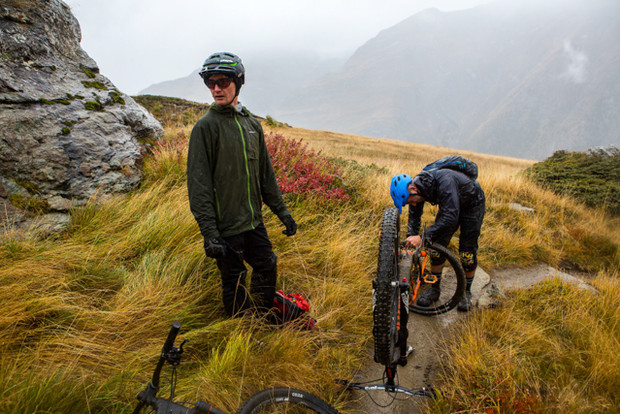 You'll often be far from help with a mechanical issue arises, so have enough supplies to get yourself out of the woods. Ryan Dunfee photo.
You'll often be far from help with a mechanical issue arises, so have enough supplies to get yourself out of the woods. Ryan Dunfee photo.
If you are one of those people who always has mechanicals or flats like it’s your job, think of what you most often need to be able to ride out without needing a helicopter rescue (see below). I’m not saying you have to bring a handful of derailleur hangers, but a general knowledge of how to get your bike rideable enough to make it out is highly recommended. Big elevation variation also means big temperature and weather changes, so a waterproof shell and maybe an insulation layer is always a good idea.
#5: Leave Your Energy Bars at Home and Snack Locally
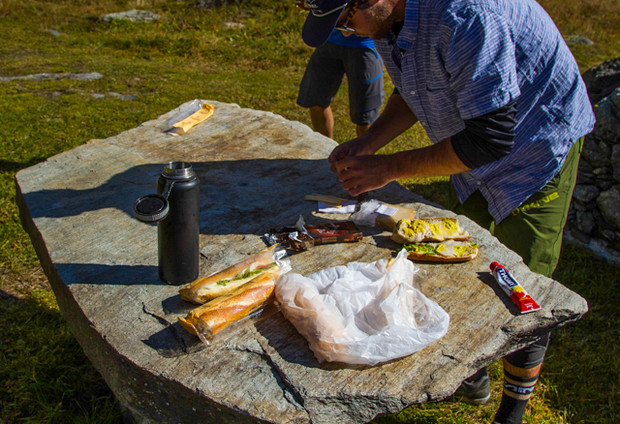 Cheese, chocolate, baguettes, Thomy mustard... I think we nailed snack time! Ryan Dunfee photo.
Cheese, chocolate, baguettes, Thomy mustard... I think we nailed snack time! Ryan Dunfee photo.
Leave your Powerbars and electrolyte blocks at home. You’re in Europe - embrace the local offerings. Chocolate, some dried saucisson, a baguette, and a block of cheese will get you through most days. Go to the local fromagerie and get whatever looks good and stinky. Grab a Swiss army knife to hack of a chunk of sausage or cheese (also good for opening that bottle of wine).
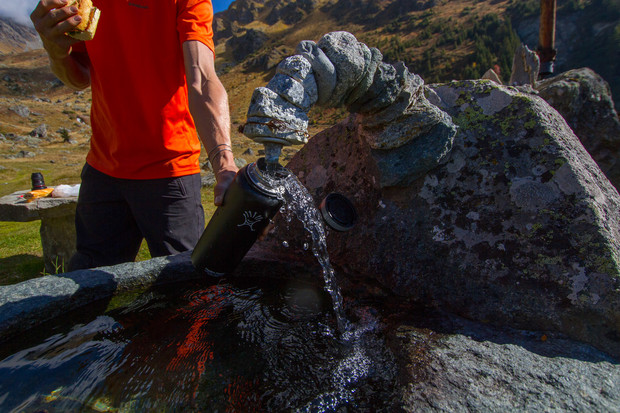 A perfectly charming spring of alpine water is always close by in the Swiss Alps. Ryan Dunfee photo.
A perfectly charming spring of alpine water is always close by in the Swiss Alps. Ryan Dunfee photo.
And with the ubiquitous gurgling fountains of alpine spring water just about everywhere, you can fill up your camelback or water bottle all day long. If your rides are planned right, they will almost always wind up at some remote local mountain restaurant, refuge, hütte, or café that serves delicious hearty mountain food and cold beers.
#6: It's a Good Idea to Get Rescue Insurance
 Rescue insurance comes cheap, you'll be glad you have it if you bail hard in the backcountry. Grant Gunderson photo.
Rescue insurance comes cheap, you'll be glad you have it if you bail hard in the backcountry. Grant Gunderson photo.
Know what your health insurance covers before you go, but it’s also a good idea to pick up some kind of helicopter rescue insurance to supplement in the event that you need an evac from the side of a mountain. For a totally reasonable CHF 40 a year, you can register with Air Glaciers, which is reciprocal with other rescue bases throughout Switzerland. Peace of mind, and a hell of a lot cheaper than the CHF 3-5,000 ride you'll have to pony up for if you go over the bars and can’t get back on your bike.
#7: Hiring A Guide Is Essential To Getting The Most Out Of Your Trip in Most Locations
 You might not need one at a park-centric resort, but the plethora of old trails in the Swiss Alps means having someone who knows where they go and how they ride will add a lot to your experience. Ryan Dunfee photo.
You might not need one at a park-centric resort, but the plethora of old trails in the Swiss Alps means having someone who knows where they go and how they ride will add a lot to your experience. Ryan Dunfee photo.
If you are going to a park-centric resort like the Portes du Soleil, you can probably keep yourself entertained on the well-marked tracks for a week and be just fine. But if the long itineraries and enduro routes that make the riding in the Alps some of the best in the world are what you’re after, you’ll really maximize your potential by booking a guide.
Many of the Alps’ guide operations are all-inclusive, week-long packages that include lodging, and it is often tough to find a guide to book for just a day. In a group, this cost can be amortized considerably, but it will be worth every franc – local guides have been sussing out the ideal trails with the most flow for years, taking all of the guesswork out of your trip.
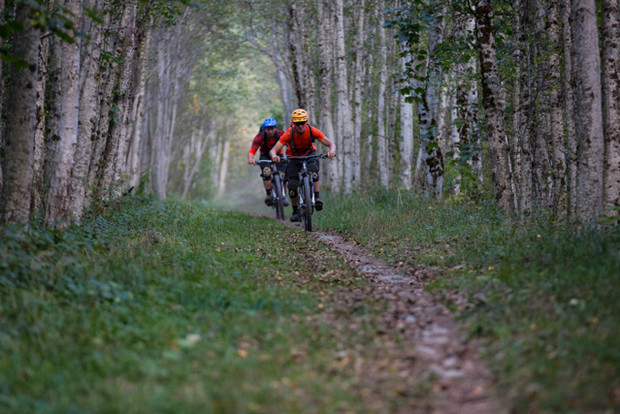 There are some outrageously big days to be had on a bike in the Swiss Alps, and a guide will help make the biggest itineraries possible. Ryan Dunfee photo.
There are some outrageously big days to be had on a bike in the Swiss Alps, and a guide will help make the biggest itineraries possible. Ryan Dunfee photo.
The best ops will have vans and bike trailers for shuttle rides, and you’ll link up the longest single trails of your life from valley to valley. And if you’re lucky, maybe they will divulge a couple of other rides that you can do on your own. But just as with off-piste skiing in the Alps, hiring a local guide is absolutely key to getting the most out of your trip.
Check out Epic Europe's site for more info. on biking in the Swiss Alps, and enter the Singletrack Switzerland sweepstakes to enter to win a guided trip with us here at Epic Europe. If you haven't already seen the TGR's interactive piece or videos about mountain biking the Swiss Alps, definitely check those out as well. We'll see you in Switzerland!



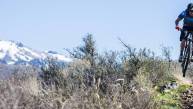


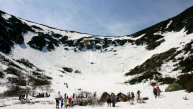

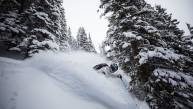


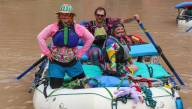
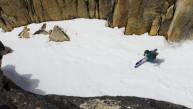

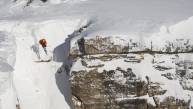
Baird
May 3rd, 2018
Epic Europe, I want to thank you for sharing these tips with us. As you know that I am currently working at the EssayWritingLab and this are just the tips I needed. I hope that other people will comment here and tell you how appreciated they are, as well.
Derwin12
June 25th, 2018
I wanted to rotate my pdf, and then I came across https://www.altorotatepdf.com/. I think that it’s one of the best and people have so many opinions about it. You can try it and let me know about it.
Lauriel
August 12th, 2018
Put value onto your property by adding an extension to your house or perhaps adding a loft conversion, kitchen or bathroom renovation, whatever the job you can be assured of a quality, reliable, guaranteed work from John’s Brickwork. We pride ourselves in being a reliable and professional building company. Loft conversions Essex
annamarsh001@gmail.com
September 4th, 2018
Essay Help
nice post.
carl jason
February 12th, 2019
The web site is lovingly serviced and saved as much as date. So it should be, thanks for sharing this with us. Downs
Papers Planet
February 22nd, 2019
Wow the blog is full of information thanks for sharing Academic writing help UK blog
leahmelda
January 10th, 2020
Our writing services are well-known for Investigative Journalism Writing Services and Magazine Journalism and Production Writing Services when client seek Journalism Assignment Writing Services.